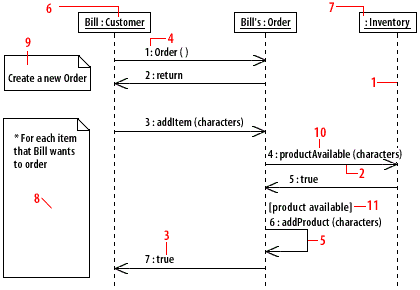Example Sequence Diagram using UML

Sequence diagrams are used to capture time ordering of message flow and collaboration diagrams are used to understand the structural organization of the system. Generally a set of sequence and collaboration diagrams are used to model an entire system
A sequence diagram shows elements as they interact over time, showing an interaction or interaction instance. Sequence diagrams are organized along two axes:
A sequence diagram shows elements as they interact over time, showing an interaction or interaction instance. Sequence diagrams are organized along two axes:
- the horizontal axis shows the elements that are involved in the interaction, and
- the vertical axis represents time proceeding down the page.
- Anonymous object: Objects for which no name is obvious or needed. Anonymous objects are commonly used in diagrams that show one object contained in another object; they can also be used to show samples of an object that may not be used in any particular part of the code.
- Basic comment
- Condition: Boolean value of true or false
- Event/message: The event is Order()
- Event signature: contains 1 parameter; addProduct(characters)
- Iteration comment
- Object name: Inventory
- Return: The information returned by a method to whatever called it. It may be a programmer-defined data type or a primitive type. A method that does not return a value is called void.
- Sequence number
- Self-reference
- Timeline